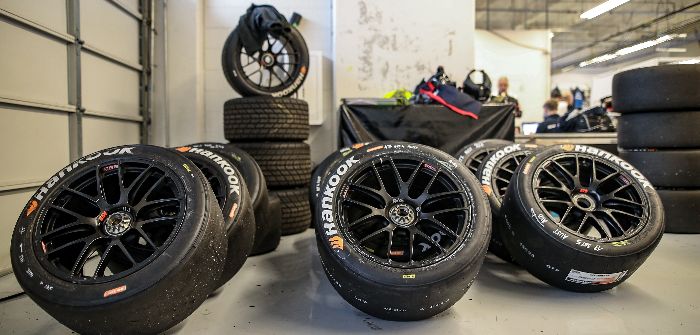Torsten Ideker, a head engineer at the Hankook Tire European Technical Center, explains how tire technologies derived through motorsport have been applied in the company’s ultra-high performance road car rubber
What is the crossover between ultra high-performance tire development and the motorsport market?
In UHP tire development, several race tire technologies have been applied to improve the handling, high-speed endurance and wear performance. Tire handling performance has been improved, among other performance parameters, thanks to motorsport-derived compounds and structures.
Race development platforms, focused on extreme grip performance, mainly through high hysteresis tread compounds, can be applied providing the best possible grip level, using innovative materials and concepts that might be applied later in the UHP tire segment after full optimization of all properties, such as rolling resistance and wear.
Furthermore, lap time simulation and driving simulators are being used for the prediction and analysis of handling performance. With regards to high-speed endurance, Hankook uses high-speed rolling simulation technology and reinforcement structures developed for motorsport.
How do the requirements for a motorsport tire differ to a road car tire?
UHP tires should have a longer lifetime compared to racing tires. Also, as they are used on normal roads and in various weather conditions, it is important to have good performance levels in both the dry and wet. For that reason, the tread compound and pattern of UHP tires are typically different to motorsport products.
How can you ensure the tire is able to withstand speeds of up to 270km/h (170mph), harsh breaking impacts and quick acceleration?
Hankook’s UHP tires incorporate special constructions and compounding, developed through motorsport. The bead and shoulder for example, are strengthened in a similar way to a motorsport tire, while a high camber profile design is used. All tires are tested under extreme conditions before they are approved for mass production.
Do the compound and construction differ for OE UHP tires compared to other road tires?
The compounding requirements differ in these applications: UHP tires require the highest level of wet and dry grip and handling, sometimes together with ultra-low rolling resistance, depending on the car maker.
Some OEMs focus their attention on sporty performance parameters, with trade-offs in comfort and rolling resistance. Performance stability is of importance, too.
Mileage is important but with a lower priority: uneven wear can be a problem sometimes, especially with a high camber setting. For standard tires, a balanced spec is usually required, and, depending on car makers, priority is given to ultra-low rolling resistance. Furthermore, sustainability and environmental aspects have become more important in recent years.



